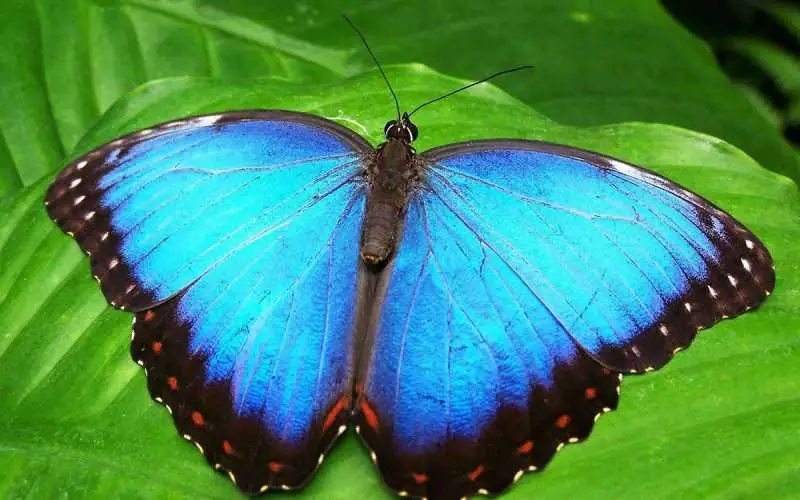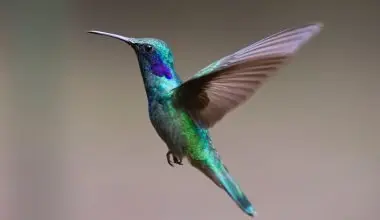Table of Contents Show
What is a Butterfly?
A butterfly is a beautiful flying creature that people adore for its beauty and charisma all over the world. It has large scaly wings that make flying possible for it. Butterflies love to feed on the nectar of flowering plants, some also like to suck the liquid from fruits that are rotting.
Surprisingly, there are about 17,500 different species of butterflies spread all over the world. The United States alone has around 750 species of butterflies living in the country.
An interesting fact is that butterflies are only able to fly when their body temperature is above 86 degrees. That is why they love the sun and like to keep themselves warm, especially in cold weather. With their age, the color of the butterfly wings starts to fade and the wings also start to look ragged.
The speed of butterflies is also a very interesting point to discuss. Because there are so many species of butterflies, the speed is likely to vary. The poisonous species of butterflies have a slow speed as compared to the non-poisonous species. The ones who have high speed fly at about 30 miles per hour. The ones who are slower fly at about 5 miles per hour.
The scientists have their own name for a butterfly. They call it Rhopalocera.
Life Cycle of a Butterfly
The lifecycle of a butterfly passes through four stages. They go through a complete transition process to become the beautiful winged creature they are from butterfly eggs. All the butterflies in the world have complete metamorphosis. The stages of their life cycle are as follows:
- Egg: It all begins with the egg phase. The life of a butterfly begins as an egg which is often laid on a leaf.
- Larva: The second stage is larva. It is a caterpillar that comes out of the egg and feeds on leaves and flowers continuously. This caterpillar can lose its skin a couple of times when it is growing. The size of the caterpillar increases as much as a thousand times before it turns into a pupa. And by the way, if you have butterfly larvae in your garden, you should rest assured that your garden is healthy.
- Pupa: The third stage is the caterpillar turning into a pupa; this stage is resting.
- Adult: This is the fourth and final stage where the egg finally transforms into an adult butterfly. This adult continues the cycle.
Classification of Butterflies
The 17,500 different species of butterfly population are divided into six families which are as follows:
1. Papilionidae (Swallowtails)

This butterfly family is the easiest to recognize because of its name. The name ‘swallowtail’ refers to the tail-like attachments to the hind wings of many butterfly species in the family. When you see a decent-sized butterfly with tails on its wings, you will know that you are looking at a swallowtail butterfly.
You have to be mindful of the fact that a swallowtail butterfly might also not have these tails because not all the family members are the same. Hence, it could still be a swallowtail even though it is without this particular characteristic.
Another thing about the swallowtails is that possess different wing colours and patterns that make their identification easier. There are around 600 species of swallowtails living in the world and less than 40 species inhabit North America.
2. Nymphalidae (Brush Footed Butterflies)

If there is any family of butterflies that has the highest number of species, it is the brush-footed family. It includes around 6,000 species of butterflies throughout the globe. 200 brush-footed butterfly species reside in North America.
Most of the family members have just two pairs of legs which makes identifying them easy. However, through a closer look, you will notice that the first pair present is smaller than the second pair of legs. These small legs make tasting food easier and more convenient for them.
Some of the common brush-footed butterflies include a monarch butterfly, milkweed, crescent, checkerspot, peacock, emperor, blue morpho, and many others. Monarch migrates in winter from Canada and northern USA to south. It travels as much as 3000 miles . According to one study, the spots on its wing help Monarch to travel that long a distance.
3. Pieridae (Whites and Sulphurs)

Commonly, we do not know the names of the butterflies we see around us. You might have seen a lot of whites and sulphurs at parks or even in your backyard. Major species in the Pieridae family have pale white or yellow wings with blank or orange markings.
The size of these butterflies is small to medium. And unlike the brush-footed butterflies, these have three pairs of legs that are of the same size.
Whites and Sulphurs are abundant throughout the world with around 1,100 described species.
Moreover, whites and sulphurs have limited ranges and they prefer to live only where legumes or cruciferous plants grow. The cabbage white is the one found most abundantly which is why it is the most familiar member of the group.
4. Lycaenidae (Gossamer-Winged Butterflies)

A butterfly family that is most hard to recognize is this family. They got their name ‘gossamer-winged butterflies’ because of common hairstreaks, blues, and coppers. Hairstreaks mostly live in tropical areas. Blues and coppers populate the temperate zones.
Their name also refers to their sheer wings which are of vibrant colors and are mostly streaked as well.
These butterflies are smaller in size but are quicker. You can look for them under the sun and when you see a tiny butterfly, it is most likely a member of the Lycaenidae family.
Photographers rarely capture their pictures. It is difficult to trick these pretty things into lending themselves for a snap. And you will not be able to catch it either. This family is the hardest to identify.
5. Riodinidae (Metalmarks)

Metalmarks are a family of butterfly species that are small to medium in size. They inhabit the tropical regions mostly and only a few of the 1,400 species in the family live in the United States.
They got their name through the metallic-looking spots that often adorn their wings.
6. Hesperiidae (Skippers)

Skippers are butterflies that are separate from other butterflies as a group. A skipper has a robust thorax which makes it look more like a moth than a butterfly. The antennae of a skipper are hook-shaped whereas other butterflies have antennae that are clubbed together..
In addition, the skippers get their name from their quick movement with a skipping flight from one flower to another. While in their flight, they tend to be showy. Most of these butterflies are drab in color with hues of brown or gray and markings of white and orange color.
Furthermore, there are over 3,500 skippers described worldwide. Texas and Arizona have the highest number of skippers residing there.
Is Butterfly an Insect?
There are vast numbers of insects on this planet. In fact, there are no other types of animals more in quantity on earth than insects.
How do we know if the butterfly is an insect? Here are some points that determine the status of an insect.
- Insects do not have a backbone. These creatures are spineless. So we classify them as invertebrates and butterflies are the only invertebrates that can fly.
- Exoskeleton made up of chitin provides the support structure to an insect as it does for butterflies. In contrast, other animals get their structure from an internal skeleton.
- The body of an insect is divided into three categories; head, thorax, and abdomen.
- There is an appearance of antennae on the top of an insect’s head.
- There are three pairs of joint legs fixed to the thorax part of an insect’s body.
Therefore, it is very easy to assess that a butterfly is an insect as it possesses all of the above-mentioned characteristics of an insect. Although, some species of butterflies have four pairs of legs rather than three; they still are said to be insects.
Additionally, butterflies are flying insects that come under the order Lepidoptera which includes butterflies and moths. The shape of a butterfly’s body is such that it has six jointed legs with three body parts; head, thorax, and abdomen.
The wings of the butterflies grow from the thorax and their head has an antennae. Butterflies have multiple eyes. You can also call them compound eyes. Each compound eye on either side of the head can have as many as 17000 individual lenses. So they can see in many directions at a time.
Thus, proved that the butterfly is definitely a flying insect!




